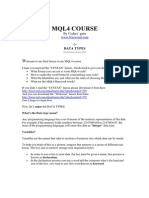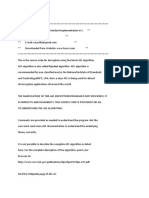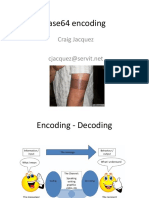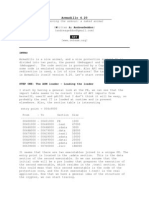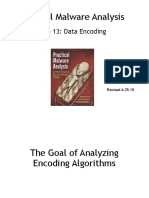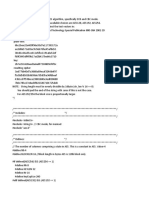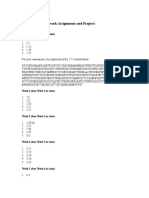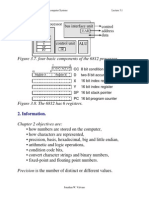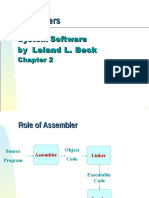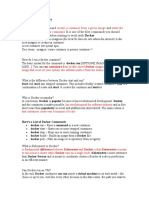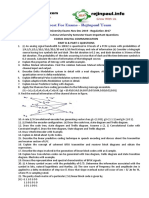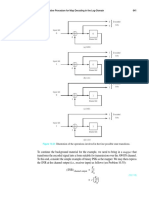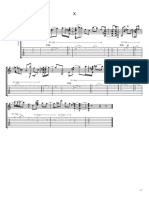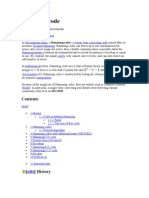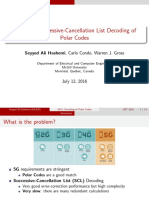0% found this document useful (0 votes)
279 views12 pagesBase64 Decoding Explained
This document explains Rene Nyffenegger's base64 decoding algorithm. The algorithm works by taking the encoded 6-bit symbols, concatenating them into 8-bit bytes, and using bit shifting and masking to populate each byte. It populates the first byte using the first two digits of the first symbol and last two digits of the second symbol. The second byte uses the last four digits of the second symbol and first four non-prepended digits of the third symbol. The third byte uses the first two non-prepended digits of the third symbol and all six bits of the fourth symbol. Once the bytes are populated, it looks up the symbols for each byte in a table to produce the decoded string.
Uploaded by
mmhoriiCopyright
© © All Rights Reserved
We take content rights seriously. If you suspect this is your content, claim it here.
Available Formats
Download as PDF, TXT or read online on Scribd
0% found this document useful (0 votes)
279 views12 pagesBase64 Decoding Explained
This document explains Rene Nyffenegger's base64 decoding algorithm. The algorithm works by taking the encoded 6-bit symbols, concatenating them into 8-bit bytes, and using bit shifting and masking to populate each byte. It populates the first byte using the first two digits of the first symbol and last two digits of the second symbol. The second byte uses the last four digits of the second symbol and first four non-prepended digits of the third symbol. The third byte uses the first two non-prepended digits of the third symbol and all six bits of the fourth symbol. Once the bytes are populated, it looks up the symbols for each byte in a table to produce the decoded string.
Uploaded by
mmhoriiCopyright
© © All Rights Reserved
We take content rights seriously. If you suspect this is your content, claim it here.
Available Formats
Download as PDF, TXT or read online on Scribd
/ 12




